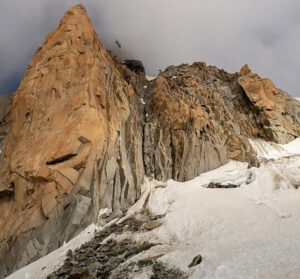There are those who contend time isn’t real, while most of us spend our lives locked in its regimental advance.
Both those groups received unlikely validation from a recent survey item that could affect timekeeping worldwide.
Climate change is altering time by slowing down Earth’s rotation, researchers found. The key factor is the rate of polar ice melt. And if the warming effect continues at its current pace, the universal timing standard — UTC — will require a tweak by the end of the decade.
“Future Earth orientation shows that UTC as now defined will require a negative discontinuity by 2029,” the study, published in the journal Nature, said. “Global warming is already affecting global timekeeping.”
Nature research paper: A global timekeeping problem postponed by global warming https://t.co/5DU1v0VDy9
— nature (@Nature) March 28, 2024
In short, climate change is slowing down time. And even though the study found things should only slow down by one second every few years, it could wreak “unprecedented” havoc — in the world of computer programming. (Sound familiar?)
Wrinkle in time
Duncan Agnew, a University of California, San Diego researcher and the study’s lead author, described the problem with an assortment of angular velocities. As the earth’s 5,400˚ C solid metal core rotates, it affects how the other layers behave. The core has cooled at a constant rate since 1972, the researchers pointed out. As the material cools, it still squishes and squelches around — just more slowly, sort of like refrigerated molasses or grape jelly.
As the magma loses angular velocity, the rest of the layers speed up. This would theoretically speed up time — unless something else slowed it down.
Enter Earth’s polar regions, where spiking temperatures are decimating ice reserves. Observations from NASA show Antarctica has lost 2,500 gigatons of ice mass since 2002 (a gigaton is a billion metric tons).
It’s induced a gigantic weight redistribution, as water drains toward the equator.
“When the ice melts, the water spreads out over the whole ocean; this increases the moment of inertia, which slows the Earth down,” Agnew told Radio France.
Officials charged with keeping world time already saw this dissonance coming; they just thought we would reach it three years earlier than Agnew now proposes. And it actually postpones any required response to a possible computer problem that echoes a famous panic from decades ago.
Time warp
Timekeeping took a major step forward in 1967, when the cesium-133 atomic clock became the standard for measuring the second in the International System of Units. Before then, time was astronomical — measured only by Earth’s rotation and relative position in the solar system.
But since atomic clocks use quartz oscillators tuned to electron movement inside the nuclei of atoms, they’re far more accurate. In fact, we’ve added 27 “leap” seconds to UTC since the advent of the system.
Now, though, we’re in uncharted territory — the land of the “negative leap second,” where we face removing time from the world clock for the first time ever. Consensus says we’ll need the negative leap second in 2029; Agnew’s research says 2026.
Either way, it could spell trouble for computer software, which generally only accounts for adding leap seconds, not subtracting them.
“This has never happened before, and poses a major challenge to making sure that all parts of the global timing infrastructure show the same time,” Agnew said, per the BBC.
So give your Y2K shelter keys a jingle and start buying all the toilet paper you can. Or just set your watch back a tick. Or not. Time’s not real anyway — is it?






